

I would also like to thank those of you who
have been sending material for inclusion
in Chip Notes as it makes my job not only
easier but a little less lonely. I would like to
invite more of you to do so. It will make this a
much richer and more interesting resource
for all the members of the Baltimore Bird
Club. The Backyard Birding and Beyond
section has been more beyond than
backyard recently. It's been great fun to read
accounts of birding in sunnier climes during
these blear winter days. I would like to see
more backyard reports. If you maintain bird
feeders like I do you frequently see the
interesting and unexpected. Please send
those and any articles directly to me. If you
don't have email please send it in typed
format. My addresses again are:
Editor's Note
by Bryce Butler
So this is the fourth issue under my editorship.
Thank all of you who have taken the time
to come up to me to tell me how much you
appreciate what I'm doing with Chip Notes.
It's very encouraging to hear from you. All
comments are welcome including critical
ones that might help improve the issue.
Bryce Butler
A few problems have come to light and
a few kinks have yet to be worked out. I
have tried having a later deadline so the
information would be more current but that
has proven impractical and as you all have
noticed the issues are arriving too late for any
notice about the lectures or early schedule
changes to be of use. I now reluctantly will
move the deadline to the 1st of the month
preceding each issue. For the next Aug-
Sep issue the deadline will be July 1st.
And so on. I will publish the deadline for
the each subsequent issue in this space.
Please make a note of this. Terry Ross has
told me that he will be posting Chip Notes
online earlier then the mail. The website is
very useful. The recent schedule change
for speakers was posted there.
(Field Trip Reports were few and sparse so are
not included in this issue, however they will fill
the Aug issue with the Apr-May reports)
2006 W Rogers Ave
Baltimore, MD 21209
email: capitano.
|
"I had long given up thought of finding a new
species. We all thought there might be great
stuff in the Fojas, but thought it would be lesser
discoveries - new populations, new subspecies,
and the like" related Dr. Beehler. Early reports by
other members of the expedition about a small
black bird with orange wattles like a chicken
led Beehler to think it was another widespread
species, the Common Smoky Honeyeater. But
after close observation it was clear to Beehler
this was not the same species, as the bottom
of the face patch on each side ended in a freedangling
wattle of skin the same orange color as
the face. "It was like no other honeyeater in
New Guinea. As the trip took me away from my
family during Thanksgiving, I decided to name
the bird after my wife, Carol, as a gift to make
up for missing the holiday. The Wattled Smoky
Honeyeater now bears the latin name Melipotes
carolae." In 2007 the CBS show 60 Minutes returned to the area with Dr. Beehler, where they obtained stunning footage of the male Black Sickle Bill Bird of Paradise displaying for a female, as well as the Golden-fronted Bowerbird, the Wattled Smoky Honeyeater and numerous others.To see this amazing segment go to the 60 Minutes website |
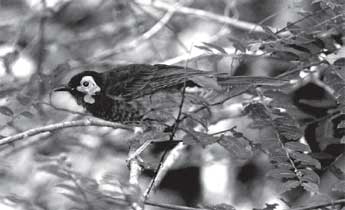 Photo:Bruce Beehler |
In the December issue of The American Naturalist,
Indiana University Bloomington, University
of Virginia and University of Southern Mississippi
researchers report the results of the first study
to examine, in the wild, the way in which natural
changes in testosterone levels determine how a
male spends his time.
Diversity in the behavior of male dark-eyed
junco is more of a continuum than a dichotomy
of Don Juans and Mr. Moms. "One of the interesting
things is that all males stick around and
help. If they have higher testosterone they help
less. If they have lower testosterone they help
more."
Bird Brains
It's All About Us
In spring, Black-capped Chickadees add a new
vocalization to their repertoire, this soft fee, bee,
bee. When breeding season begins, the tiny
brains of chickadees and other songbirds enlarge
to enable the birds to create more sounds. After
the breeding season is over and the birds no
longer need that singing function, the
part of the birds' brains that controls vocalizations
decreases in size. Studying the ability of a bird's
brain to generate new neurons in order to sing in
the spring has fundamentally altered how scientists
think about the human brain -- and opened the door
for new research on understanding degenerative
brain conditions, including Parkinson's and
Alzheimer's diseases. One of the scientists
studying neuron replacement in birds' brains is
Fernando Nottebohm of Rockefeller University in
New York. After first studying the brains of canaries
and finches, he focused on the remarkable ability
of Black-capped Chickadees to store hundreds of
seeds and recall their locations when needed.
Juncos on Steroids
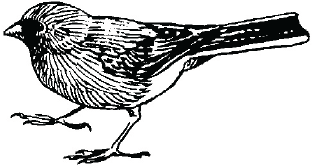 The ability to ramp up testosterone production
appears to drive male dark-eyed juncos to find
and win mates, but it comes with an evolutionary
cost. Big fluctuations in testosterone may also
cause males to lose interest in parenting their
own young, scientists have learned.
The ability to ramp up testosterone production
appears to drive male dark-eyed juncos to find
and win mates, but it comes with an evolutionary
cost. Big fluctuations in testosterone may also
cause males to lose interest in parenting their
own young, scientists have learned.Bird Blitz identifies new IBA in Baltimore
County -- Prettyboy Important Bird Area
by David Curson
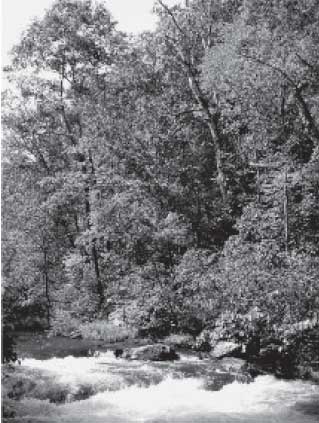 photo: David Curzon | Last summer sixteen volunteers from the
Baltimore Bird Club took part in a series of
Bird Blitz surveys in the Prettyboy Reservoir
watershed and Gunpowder Falls State Park.
The objective was to help determine whether
this area qualifies as an Important Bird Area
(IBA). 2007 was the first statewide season of
IBA Bird Blitz and was a great success with
50 volunteers completing 46 bird counts at
11 sites across
Maryland. Baltimore Bird Club members can be proud that their effort was the greatest of any bird club in the state, with 14 different surveys completed and 74.5 km of survey transect walked. Bird Blitz surveys are done during the breeding season, within Atlas "safe dates", and the goal is to obtain a breeding count of the at-risk bird species for which Important Bird Areas are identified. If a site supports a population of one or more at-risk species that exceeds a species-specific threshold number (listed in the IBA criteria, available at http://www.audubonmddc.org/SciCon_IBAs.html) then it likely qualifies as an IBA. The results of the Prettyboy-Gunpowder Bird Blitz found that two at-risk species exceeded their respective IBA thresholds. These were Louisiana Waterthrush, which thrive along the gushing, unpolluted waters of the Gunpowder Falls River and its tributaries, and Worm-eating Warbler, which was found in impressive numbers along the steep slopes just above the river, especially where mountain laurel forms an understory. Using the Bird Blitz results, the Maryland-DC IBA Technical Review Committee identified this area as an IBA (Prettyboy IBA) at its last meeting in February. This name was chosen because much of the Gunpowder Falls State park is not included in the IBA - only the Hereford section of the state park is included. Prettyboy qualifies as an IBA not only for the 2 at-risk species mentioned above but also for the species assemblage of Forest-Interior Dwelling Species (FIDS), birds that require large intact blocks of forest to maintain healthy populations. 20 FIDS breed regularly at the site, although some such as Broadwinged Hawk and Cerulean Warbler seem to be on the way out -- none of these species were found by last year's Bird Blitz. Thanks to all who took part in the Bird Blitz effort last year, and thanks in particular to Paul Kreiss who coordinated the surveys. Participants included: Paul Kreiss, Georgia McDonald, Dan McDonald, Wendy Olsson, Rob Olsson, Kevin Graff, Carol Schreter, Peter Webb, Keith Costley, Nancy Grace, Bryce Butler, Tekla Ayers, Steve Ayers, Andrew Ayers, David Curson.
|
The Maryland Department of Natural Resources
(DNR) held two public hearings on January
30th and 31st in Garrett County and Annapolis
on "Wind Power and Maryland's Public Lands."
An estimated 250 people attended the Annapolis
hearing, including five BBC and two MOS members.
We also represented three of the approximately
60 people giving testimony, which was
about 90 percent against building wind turbines
on public lands. A compilation of points from our
testimonies are provided below.
In short, we believe that it is completely inappropriate
for the DNR to lease or otherwise allow
our public lands to be used for commercial
development purposes or activities. In particular
we are of the opinion that industrial wind turbines
should NOT be erected on public or private land
on Maryland's Appalachian mountaintops. We do
not oppose wind power generation per se if there
are no negative consequences associated with
their location. However, the use of public lands
for corporate gain should not be permitted. The
drop-in-the-bucket contribution of less than 1%
of the electric grid that serves the energy needs
of Maryland, Pennsylvania and New Jersey cannot
compensate for the consequences to wildlife,
ecosystems, and esthetics. Consequences of
It is our opinion that state forests are not suitable
locations for the private development of
wind farms given the opposition of our constituents,
the environmental risks, and the minimal
energy produced. Many of you received an
email from the BBC asking you to go online to
the DNR website by March 3rd to register you
opinion on this matter (www.dnr.state.md.us/sustainability/wpm/). We hope you had the opportunity
to do so. The voting is closed now, but
you can click on "Review the Public Comments"
to read the hundreds of comments posted, most
of them against using public lands for commercial
use. We will keep you posted on what happens
next.
Conservation Corner: Building Wind Turbines in State Forests
by Joan Cwi
The Baltimore Bird Club has been working in conjunction
with the Maryland Ornithological Society
to oppose building wind turbines on State Forests
in Garrett County (Savage River and Potomac
State Forests). A total of 100 wind turbines, each
over 400 feet tall, are proposed to be built on
mountain top ridges requiring the clear-cutting of
400 acres to build the towers and support roads.
This land would be off-limits for future recreational
use. To give you some idea of what 400 feet
high means, think 115 feet higher than the US
Capitol and 50 feet higher than the tallest tower
of the Chesapeake Bay Bridge.
And NO studies have been done on eastern
migratory flyways during peak migration periods.
Back Yard Birding and Beyond |
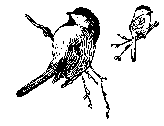 |
Perhaps you might like to put an item in Chip Notes regarding the new accessible birding website: http://www.comfortablebirdingforall.com/index.html.
I found out about it from a post on the NH listserv which listed Birdwatchers Digest as the source of their information. The website is interested in hearing from all of us about other accessible sites not already on their listings. I know there are members in the Baltimore Bird Club who have need of accessible birding.
Good Birding,
Georgia McDonald
We enjoyed our January 2007 trip to Merritt Island and the Titusville area so much that we decided to repeat the trip during January 22 - 25, 2008. Our goals were to spend most of our time on the Wildlife Drive at the National Wildlife Refuge, visit at least one other area that we missed in 2007, and photograph as many birds as possible.
As in 2007, the Wildlife Drive was terrific, with plenty of Roseate Spoonbills, Wood Storks, four heron species, three egret species, Anhingas, Ibis, Avocets, Kingfishers, and a variety of ducks and raptors. This year we saw some birds we did not see in 2007 - American Bittern, Reddish Egret and Sora. There is also a new foot trail along the Drive (the Wild Bird Trail) with two observation platforms. Although we did not see any bobcats this time, we did see wild hogs on two occasions. An early morning walk on the trail at the visitors center was not very productive, but we did find a Black-and-White Warbler in a tree by the parking area. Three visits to the Oak Hammock Trail produced a Black-throated Green Warbler, another Black-and-White Warbler, a White-eyed Vireo, a Hermit Thrush, and some Ruby-crowned Kinglets and Gnatcatchers.
One afternoon we drove through part of the Canaveral National Seashore to get to Playalinda Beach. Along the road we saw various wading birds, ducks, and raptors as well as the Space Shuttle on the launch pad in the distance. On a deserted part of the beach we saw a variety of shorebirds, including Black-bellied Plover and Sanderling. Then we finished the day by doing a short walk on the Pine Flatlands Trail where we found several Osprey, some Ground Doves and a Phoebe.
We repeated our 2007 visit to the Water Treatment Plant ponds - the highlight this time was a group of Wood Storks strolling casually down the dirt road in front of us.
A new area on this trip was the Tosohatchee State Wildlife Area west of Titusville. We drove down the dirt Powerline Road to the St. Johns River and saw a Red-tailed Hawk, Red-shouldered Hawks, a Bald Eagle and a Kestrel. The wetland areas along the road were good for herons, egrets, Common Moorhens and Coots. On the way back to Titusville we found two Sandhill Cranes in a field and a Yellow-bellied Sapsucker (only one of the trip) in a tree outside the town of Christmas Post Office.
On the drive back to Maryland we checked our lists, discovered we had one more species than we had in 2007, and agreed that we wouldn't mind going back again.
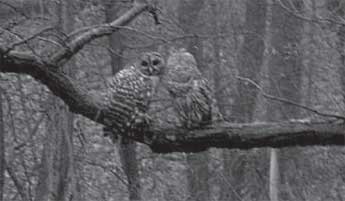 Ok, ok. So it's not called kissing. It's "mutual
preening". And admittedly with their powerful
beaks kissing would be awkward if not downright
dangerous, but it sure looks a lot like kissing.
We've been enjoying this pair who are nesting
again this year somewhere behind our property.
Their courtship hoots and cackles and squalls are
amazingly varied. And when he sidles up to her
on the branch and puts his face right up to hers,
touching his beak right next to hers and they both
start nuzzling cheek feathers, it sure looks a lot
like kissing (photo: Bryce Butler).
Ok, ok. So it's not called kissing. It's "mutual
preening". And admittedly with their powerful
beaks kissing would be awkward if not downright
dangerous, but it sure looks a lot like kissing.
We've been enjoying this pair who are nesting
again this year somewhere behind our property.
Their courtship hoots and cackles and squalls are
amazingly varied. And when he sidles up to her
on the branch and puts his face right up to hers,
touching his beak right next to hers and they both
start nuzzling cheek feathers, it sure looks a lot
like kissing (photo: Bryce Butler).
To Baltimore Bird Club Home Page
Spring Field Trip Schedule -- Hooray!
(check web site or booklet for details and directions)
APRIL 2008.
MAY 2008.